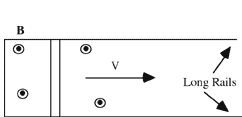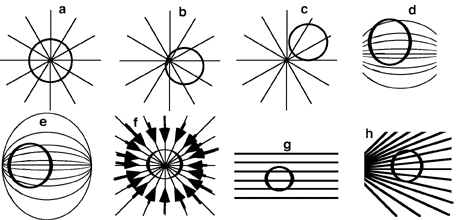Goal: Reason with Lenz’s Law
Source: 238-730 Lenz’s Law 2
For which of the following situations will the current flow clockwise?
<table
field directed out of the page.

angle q. A constant B field is directed vertically upward.

infinite current-carrying wire.

1. No situations
2. A
3. A and B
4. A and C
5. A, B, and C




Commentary:
Answer
(4) There is usually a lot of confusion with Lenz’s Law. It is important
to determine what students are using to decide the direction of the
current. Some students despair of ever figuring it out and just guess.
Examining the microscopic motion of charges often helps.